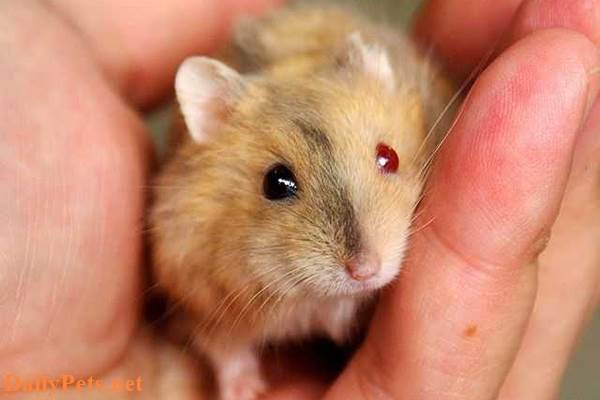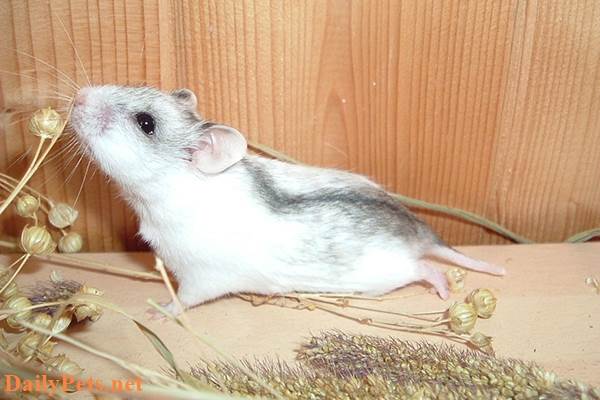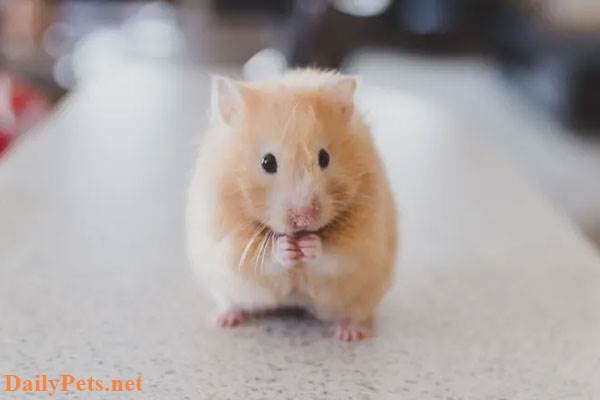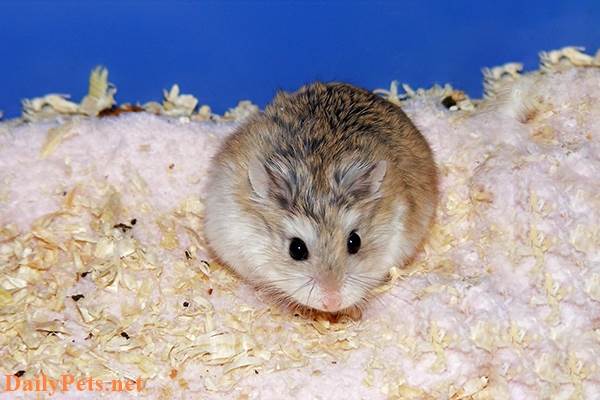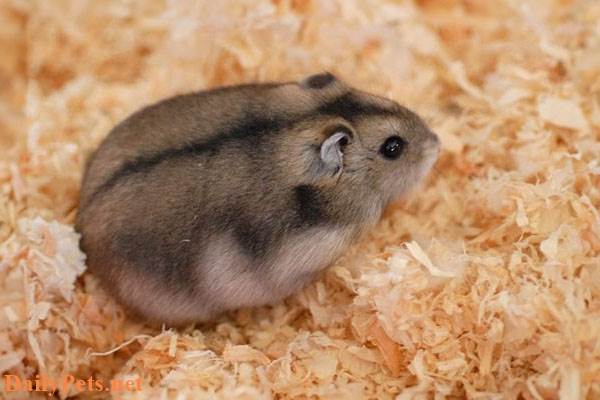Would you like to adopt these winter white mice? Let’s go with DailyPets.net to learn about this mouse breed’s origin, characteristics, and care.
Where do Winter White Hamsters come from?
The Winter White Hamster is native to Asia, such as China, Kazakhstan, and Mongolia. The Winter White Hamster’s natural habitat is usually covered with snow, which is why they have adapted to their ability to change coat color as winter approaches.
Despite such camouflage, the winter white rarely lives past 12 months in the wild and fortunately passes its 6th birthday. Your pet will be grateful for a warm, safe, and loving home.
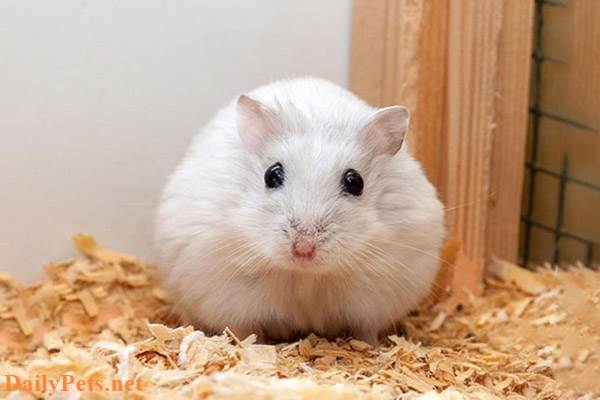
Winter White Hamster.
Winter White Hamsters often burrow in the wild to find a safe place to sleep. This is also where they choose to breed and hide from predators. These burrows often have many interconnected tunnels, and the hamster will use whatever material it finds to build a comfortable nesting area. This is why Winter White Hamsters like to have tunnels in their cages.
Appearance characteristics of the Winter White Hamster
These Winter White Hamsters are classified as small-sized mice. An adult mouse usually achieves:
Length: about 8-10 cm
Weight: about 50 – 75 grams.
The head of the Winter White Hamster is large and rather pointed forward. The eyes of the Winter White Hamster have large white stripes, are almond-shaped and glossy black. Winter White Hamster eyes protrude outward; the eye contour is very small and low. The eyes of the Winter White Hamster do not protrude much but have a rather deep cavity. The forehead of the Winter White Hamster is quite flat. The nose of the Winter White Hamster is straight but very small; the nostrils are small, and the tip of the nose is pink-brown. The ears of the Winter White Hamster are relatively large; the base of the ears is broad, with a broad leaf shape, usually facing forward.
The body of the Winter White Hamster is quite slim and toned. The back of the Winter White Hamster is relatively long; the back is relatively wide. The lower body is developed with a flat and rounded posterior abdomen. Winter White Hamster feet are small, soft, full-toed, very long, and have sharp claws. The hard claws help the Winter White Hamster to dig very quickly and well. The tail of the white Winter White Hamster has a very short stripe.
The Winter White Hamster’s coat is quite soft and short. The Winter White Hamster’s coat color is white. A strip of black-striped hair is on the back of the Winter White Hamster. The coat color of the Winter White Hamster varies in brightness. The more winter, the lighter the color of the Winter White Hamster’s fur, and the lighter the back hair band. The fur of the Winter White Hamster is usually denser, which helps the Winter White Hamster to retain heat.
Personality characteristics of Winter White Hamster
Winter White Hamsters are gentle and friendly pets. This mouse breed does not take long to get used to the new environment. They are not aggressive or grumpy with anyone, even if they don’t know them. These mice are very popular with children because they are quite docile.
These mice are friendly, but they are not suitable for keeping with other animals, including mice. Although not the smallest, the Winter White Hamster is also smaller in appearance than other animals. They are too gentle to protect themselves. Better yet, they should be kept alone.
Winter White Hamster breeding
Like most other mouse breeds, the Winter White Hamster stripe begins to breed very early. Winter White Hamsters can start breeding as young as 4 months old. These mice have a lifespan of 18-24 months. If kept in captivity, mice can live up to 30 months old. The gestation period of the Winter White Hamster is usually 18 – 20 days. Some individuals may have longer days. In each litter, the mother Winter White Hamster can give birth to 8-10 pups.
How to Care for a Winter White Hamster
Caring for the Winter White Hamster is quite simple. You need to provide a cage large enough that your pet cannot escape and feed the hamster a balanced diet daily.
You also need to provide the hamster with plenty of toys and exercise wheels for the hamster. If you have a Winter White Hamster, buy many toys to reduce aggression and territorial disputes.
Winter White Hamsters are not as prone to diabetes as their Campell cousins, but it’s best to stay safe to feed a well-balanced diet. Also, provide your hamster with foods and toys that are easy to chew to help them grind their teeth.
Buy litter that is clean and dust-free for your hamster and safe.
A ceramic mouse-eating bowl is also a must and easy to clean.
Clean and change cage lining weekly.
Avoid placing your hamster’s cage in direct sunlight.
Winter White Hamsters Food
Creating a balanced diet is perhaps the most critical part of hamster care. A winter white will require many nutrients and energy throughout the day. Like all other hamsters, the Winter White Hamster eats fruits, vegetables, seeds, nuts, and insects.
Here are more detailed instructions on how to feed a Winter White Hamster:
Choose a good food mix for your hamster and feed your Winter White Hamster daily. Then, supplement this food mix with fresh fruit, snacks, and insects.
Winter White Hamsters love to eat insects, which are common foods they find in the wild. Dried or fresh mealworms are the perfect treat for your hamster, which can be a reward for the times your baby is petting, petting, and playing with it.
How to train and tame a Winter White Hamster
A dwarf hamster can be easily tamed; you only need to play with it regularly. Once the Winter White Hamster is tamed, you can hold it whenever you want, and your pet will begin to enjoy your touch.
When holding a Winter White Hamster, never approach it directly from above. You should lift your hamster from below because if you pick it up from the top, the hamster will think you are a predator. Just be slow and gentle when you hold it, and your hamster won’t reject you.
Steps to train a Winter White Hamster:
1. Give your hamster winter white some space for a few days after purchase
2. Talk softly to your hamster winter white and give it treats; this will help them get used to your scent and voice.
3. Take advantage of petting your hamster winter white whenever possible and enjoy treats every time it gives you petting.
4. After a while, start putting your hands on the bottom of the cage for the hamster winter white to climb up and explore.
5. Gently lift your hamster winter white from below and pick it up.
Common questions about Winter White Hamsters
How long does a Winter White Hamster live?
The average lifespan of a Winter White Hamster is 1.5-2 years. Hamsters generally have a fairly short lifespan, and Winter White Hamsters have one of the shortest lifespans in the hamster family.
Should you adopt a Winter White Hamster?
Sure! Winter White Hamsters are rewarding small pets, and they are extremely cheap to care for. Whether you’re a first-time pet owner or just looking for a fun animal to tame and care for, the Winter White Hamster is a top choice.
Winter White Hamsters are generally easier to tame than their cousins Robo and Hamster Bear. Another major benefit of the Winter White Hamster is that you can keep a hamster alone or in a larger litter.
What is the minimum cage size for a Winter White Hamster?
Choosing a larger cage is always better when it comes to hamster cages, so buy the largest cage you can afford. The minimum size is generally 60 cm long by 30 cm wide.
How do I know if I’m caring for Campbell’s or Winter White Hamsters?
Not sure if you’re keeping a Campbell’s or Winter White Hamster? The easiest way to tell the difference is to look at the location of the hamster’s body color; if there is a cream color between the body color transition to the belly color, then you are probably a Campell hamster. When there is a more abrupt transition between two non-cream colors, it will be Winter White Hamster.
Here are some other quick checks you can do:
1. Winter White Hamster usually has thicker and darker back stripes
2. Winter White Hamster has a rounder body (Campbell’s hamster is thinner)
3. Winter White Hamster gradually turns whiter as winter approaches.
Are Winter White Hamsters safe for children?
Winter White Hamsters are great pets for children.
Do Winter White Hamsters bite?
Yes, hamsters can bite, but whether a hamster will bite you depends on your taming skills and handling.
Slowly tame your pet hamster about 3-4 days from the date of purchase.
If the Winter White Hamster squeaks or hisses when you are trying to hold or train it, this signal tells you to stop and give the Winter White Hamster some space.
Holding or training an uncomfortable Winter White Hamster will often lead to biting. A hamster’s bite may be painful but not too painful and will heal quickly. Hamster bites are a last resort, so understand your hamster’s body language to avoid being bitten.
Can Winter White Hamster Live Together?
Winter White Hamsters love the community; they are not territorial compared to other hamster breeds, so you can keep several Winter White Hamsters in the same cage. Just monitor everything closely to make sure there are no fights.
Same-sex groups usually work and play well together, but a mating pair can often perform better when caring for their offspring. Avoid keeping one female with multiple males, or you will get in trouble.
What to do when Winter White Hamsters bite each other?
Hamster fights do happen, and sometimes, it’s necessary to establish a natural hierarchy. Hamsters will sometimes bite each other; if you notice blood or any injury, separate the winter white immediately.
Avoiding territorial aggression to reduce aggression in your hamster’s cage would be best. You should buy multiple food bowls, water bottles, and toys so that none of your Winter White Hamsters will be affected by protection over a specific area.
Where to buy a winter white hamster?
Winter white hamsters are available at pet stores; however, due to their strong resemblance to the more common Campbell’s hamsters, these stores often misclassify them.
Typically, these small hamsters have a dark gray back with a black stripe and white belly fur. However, during winter, their back fur can turn degrees white due to changes in day length.
These hamsters also possess furry paws. Distinguishing a winter white hamster involves noting its more compact, rounded body and shorter face. In contrast, the Campbell breed showcases a slimmer, sleeker body, a more rat-like face, and larger ears.
For certainty in acquiring a Russian winter white hamster, purchasing from a reputable breeder is advisable.
When obtaining a hamster, ensure it displays good health, alertness, and vigor. This includes bright eyes, a glossy coat, a dry tail, and an absence of nasal or eye discharge. Evaluate the bedding quality to ensure cleanliness and consider the health of any potential cage mates.
